
SEO is an ever-changing beast. Once you think you know exactly what Google is looking for, an algorithm update throws a wrench in your strategy.
So, what’s one to do?
While there will always be algorithm updates and improvements, some proven SEO tactics will always be in practice. By implementing these tactics on your site, you improve your odds of rankings while also future-proofing your website against Google’s inevitable changes.
There are two ways to affect change with SEO: on-page and technical. We will take a close look at both in this post.
On-Page SEO Tips for 2022
If you’re new to SEO or you’re looking to make quick, impactful changes, focusing your efforts on on-page SEO tactics is a great place to start.
Here are some important SEO tips to keep in mind when preparing your strategy in 2022.
1. Target Longtail Keywords
Long-tail keywords are longer and more specific than the usual target keywords. They usually have lower search volume than shorter keywords, but they can be very useful.
Long-tail keywords show you why users make a particular search and not just what they are looking for. They also now account for higher search volume now compared to shorter keywords.
A recent study found that 91.8 percent of all searches are for long-tail keywords. This is a big change from the early days of the internet.
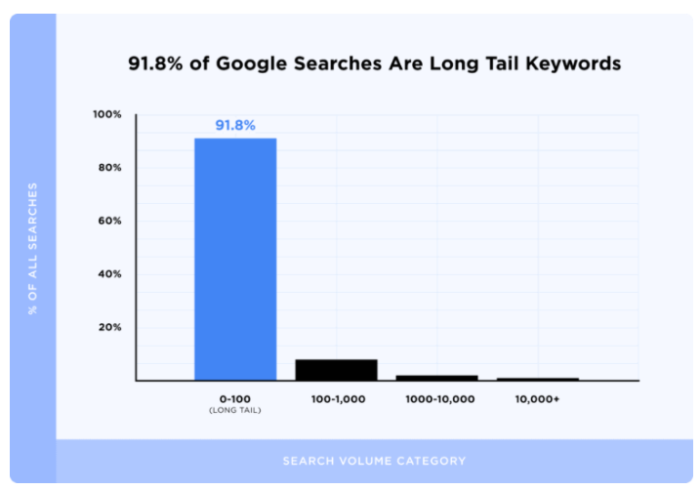
One reason to target long-tail keywords is they tend to have higher search intent. That is because they are more specific, so you can narrow the keywords down to those highly related to the actions you want users to take on your site.
An example of a long-tail keyword is “how to rank on Google.” This is opposed to a short-tail keyword such as “Google ranking.”
The intent behind both variations is very different. For “how to rank on Google”, you can see that the user is posing a question which means they are looking for a direct answer to it.
For “Google ranking”, we don’t really know what the user’s intent is. Maybe they are just trying to understand what it means.
While it’s not always the case, long-tail keywords tend to have lower search volume and, as a result, lower competition. Therefore, they can be easier to rank for.
How can you effectively leverage long-tail keywords in your content?
You don’t want to include a bunch of different long-tail terms in your current content, hoping it will work. This can have the exact opposite effect of what you’re looking for.
Tips for adding long-tail keywords to your content:
- Determine the blog topics you want to cover.
- Plug the most generic phrase/title of each topic into a keyword research tool like Ubersuggest.
- Identify long-tail keywords related to your chosen topics with high search volume and low competition/CPC.
- Narrow down your list of keywords to the ones with high search intent. For example, if you are a credit card company, and one of your topics is “opening a credit card”, a long-tail keyword you can target would be “how to open a credit card for the first time”.
- Write relevant content that answers the user’s intent behind the chosen keyword.
2. Use Keywords in Alt Text for Images
Alt text, or alternative text, is a short description of an image. It remains an important Google ranking factor with MozCast saying it still has more than a 20 percent effect on results.
Alt text has three main uses:
- Accessibility: Alt text is read out loud with the use of a screen reader to users who are visually impaired. Unfortunately for e-commerce sites, 55 percent of them fail to meet basic accessibility requirements.
- Context: When an image cannot load onto the page, the alt text appears as an alternative to provide context to users.
- Search engine optimization: Search engine crawlers use alt text to help them index an image properly. Google confirmed in 2021 that alt text is “still important for SEO.”
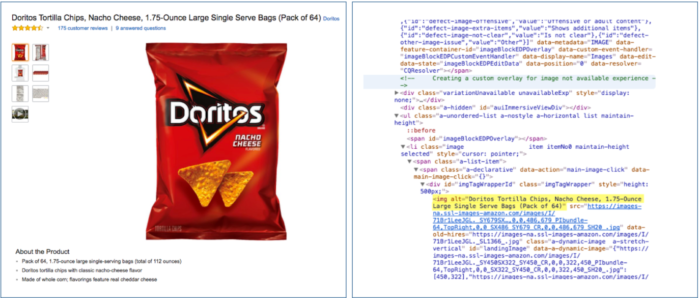
As the internet becomes more accessible, so does Google’s algorithm. This means that accessible websites will be prioritized over their non-accessible counterparts. After all, the more accessible a site the more potential for traffic.
Tips for using keywords in alt text:
- Think about the image first and write a description to match it.
- Make sure your description gives a natural description of the image. Don’t be too complex.
- Think of ways to incorporate your target or secondary keywords in the alt image text. For example, highlighting that an image is a screenshot of the process your content explained.
3. Use Keywords in Headers
When you place keywords in headers, you signal to search engines and users that your content satisfies the target intent behind those search terms. Just as a table of contents provides context to users, keywords placed in headers can do the same for search engine bots.
While 36 percent of SEO experts think headlines are important, this doesn’t mean forcing keywords to fit if they don’t make sense.
Consider the user experience and Google recommendations before deciding where to place your target keywords or other variations. Keyword stuffing should be avoided at all costs.
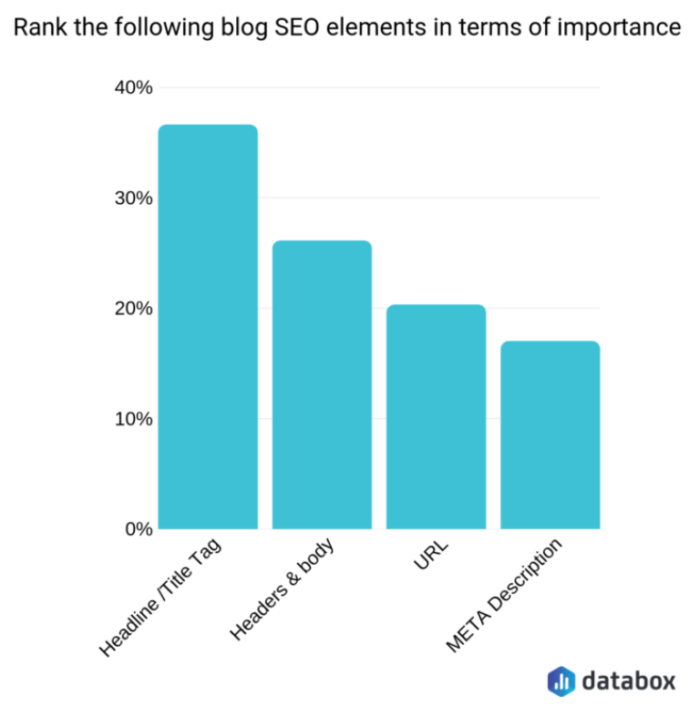
Tips for using keywords in headers:
- Select the target keyword of your post to include in the headers.
- Plug the keyword into a keyword research tool to find other variations of it.
- Use the keyword and its variations in your headers as often as you can (aim for at least 40 percent of headers).
4. Focus on Great UX (User Experience)
Beyond keywords and content, you have to consider the experience your users have from start to finish.
Google takes many factors into account when ranking your website, one of them being the time spent on the page (or dwell time). If users are bouncing from your page within seconds of arriving, it signals to Google that it’s not the content their users are looking for.
One thing that will affect dwell time and bounce rates are how long it takes a page to load. An analysis of over 5 million desktop and mobile pages found that the average time it takes for a web page to fully load is 10.3 seconds on desktop and 27.3 seconds on mobile.
The first 5 seconds of a page loading has the biggest impact on overall conversion rates. Each additional second it takes for a page to load drops conversion rates by an average of 4.42 percent each time.
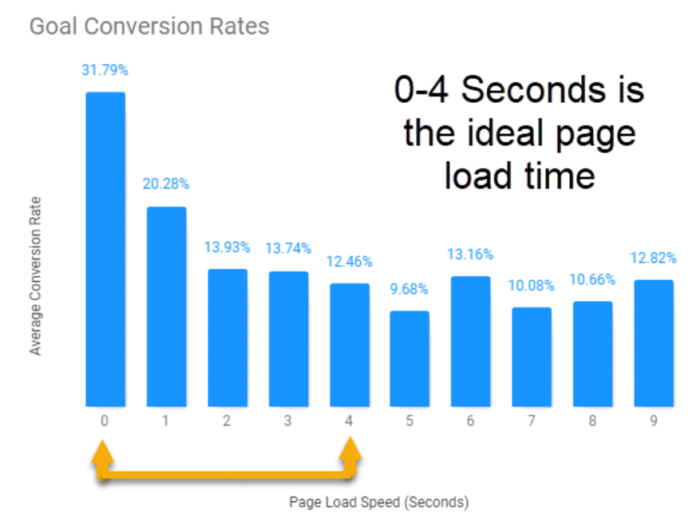
User experience has become a very important ranking factor for Google that they started rolling out their core Page Experience update in 2021.
Tips for creating great UX:
- Make sure the content and images used satisfy the search intent for each keyword.
- Include the most relevant information at the top of the page.
- Reduce image sizes to improve loading times for each web page.
- Make the content easy to navigate, particularly for longer content pieces. This could be including a table of content, having clear headlines, or using shorter paragraphs.
- Clean up the clutter like redundant content and don’t use any distracting images or fonts.
5. Include Multiple Media Types
There are some things you can do that indirectly benefit your SERP rankings. One of those things is to use multiple media types across your blog.
Beyond images, media can also include audio files, videos, ebooks, and GIFs. These media types are meant to be engaged with and, as such, increase dwell time on your website as well as user experience.
According to Hubspot, videos are the #1 form of media used in most content strategies, overtaking blogs. 86 percent of businesses use video marketing as a tool to grow their business and, on the consumer side, 84 percent of people say that watching a brand’s video is what convinced them to buy a product or service.
Audio is also on the rise with the average consumer spending more time listening as well. 61 percent of businesses plan to increase digital audio advertising budgets as well.
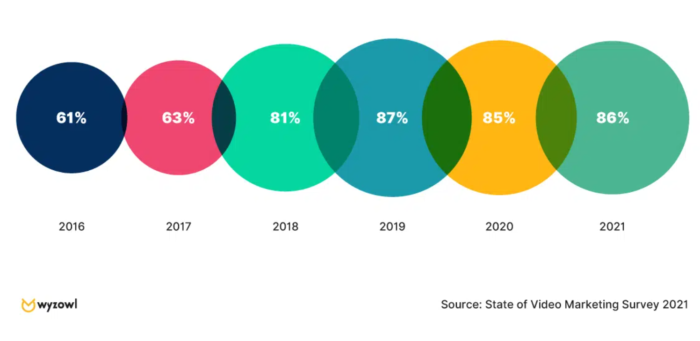
Finding ways to incorporate videos and audio on your blog can be a great way to improve the user experience and increase dwell times on your site. You can get started by including small audio recordings in blog posts or short video clips that simplify difficult concepts.
Tips for including more media types:
- You don’t already, create a YouTube channel as another marketing avenue to build a following on.
- Embed YouTube videos that cover similar topics in relevant blog posts.
- Include audio clips from relevant podcasts that fit your topic.
- Present data and stats in more engaging ways such as with data visualizations and other custom graphics.
6. Use Internal Links
I mentioned above that Google considers time spent on page when ranking your website. A second similar metric is the time spent on your entire website. This is another key ranking factor for Google’s algorithm.
The longer a user stays on your website, the further into the funnel they are likely to go. Beyond that, it signals to search engines that your content is high quality and relevant.
More than 80 percent of SEOs believe that each blog post should include at least 2-5 internal links with most people spending equal amounts of time on their internal and external linking strategies.
The two key steps to increasing time spent on your site are:
- write engaging, in-depth content
- link to relevant internal content
When you link to internal content, you drive your users deeper into the site. This increases the odds of them having meaningful interactions with your content (e.g., leaving a comment on a blog post or sharing on social media), which in itself is beneficial to SERP rankings.
Tips for incorporating and leveraging internal links:
- Choose pages with additional content that is relevant to the topic the user found you from.
- Use anchor text that sounds natural and encourages users to click on to the next page.
- Avoid using generic anchor texts such as “click here” or “read more”. More descriptive anchor text helps Google understand how to index your page.
- As a rule of thumb, make sure the most important pages on your website are always three clicks or less away from the first page seen.
7. Focus on “Top of the Funnel” Keyword Phrases
The three main phases of the funnel are awareness, consideration, and decision.
When speaking about the top of the funnel, I mean the keyword phrases that grab the attention of prospective customers. In fact, 95 percent of marketers make sure to create content for their brand that targets top of funnel keywords.
Content that targets these terms are meant to build “awareness” around the topic. They draw the reader in without expecting them to take an action. That’s what the rest of the funnel is for.
What do these keywords look like? Top of the funnel keywords tend to answer more general questions about the topic. There are many different examples on what they look like but here is one you can refer to that I have written about before:
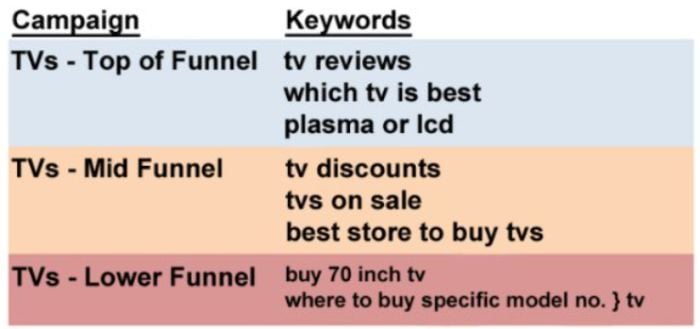
By focusing on these keywords, you’re doing two things:
- reaching a larger audience as these terms tend to have higher search volumes
- drawing in users earlier in their research process
Tips for choosing top of funnel keywords:
- Choose terms with higher search volume and low SEO competition.
- Create a list of additional keywords related to your chosen terms that would reflect other stages of the buyer’s journey. This will help you ensure traffic generated converts into leads or sales.
- Create up to three “top of the funnel” customer personas. Based on these personas, you can make sure each search query matches the type of customer you want to sell to.
Technical/Offpage SEO Tips for 2022
Even though technical SEO is often forgotten when creating your strategy, it still remains a crucial part. It doesn’t look like Google will be changing this anytime soon.
Here are some key technical SEO tips to implement in 2022.
1. Eliminate Spammy Backlinks
It used to be that backlinks were the hidden treasure of SEO. It’s true that backlinks are still a major ranking factor for Google, but the quality of those backlinks is now more important than ever before.
In 2021, Google rolled out another algorithm update that targeted and devalued bad backlinks. While no sites were individually penalized in the process, it stopped counting a lot of backlinks that many sites had grown accustomed to which affected rankings.
There are still many sites out there that never get any organic traffic from Google, 91 percent of all pages in fact. This is because more than 50 percent of those pages don’t have a single backlink.
If you’re a website owner, you’ve probably received some requests for backlinks in the past. Sometimes they will offer to pay you to do so. In almost all cases, the requests come from website owners whose site has a lower domain authority score than yours or might be using shady SEO practices.
It is very important to vet all backlink requests, like you would with content sources, to make sure they won’t negatively impact your site. How can you know what sites are linking to you and how you compare to your competition? With my backlink checker tool. Simply enter the domain URL and receive a complete overview of your backlink profile:
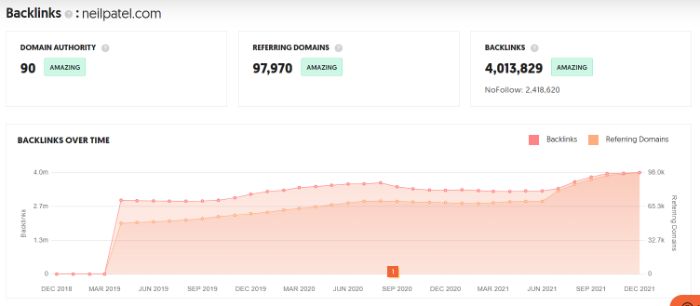
You can also get more granular and see each linking site, their domain authority, and anchor text they used to link to you:

Tips to eliminate spammy backlinks:
- Run an audit to see what backlinks your website is currently receiving.
- Before you Disavow an undesirable backlink, try reaching out to the website and ask them to remove it.
- Per Google, any websites that offer affiliate links to your site need to qualify the links – so be sure to ask any affiliates to add the correct HTML tag.
2. Build Your Brand
Since the late 2000s, Google has increasingly put an emphasis on brands. In particular, they look for brand signals as a way to weed out misinformation to provide more trustworthy results for each search. This makes it a critical ranking factor.
I, myself, saw a huge jump in traffic in 2016 thanks to one thing: the growth of my brand.
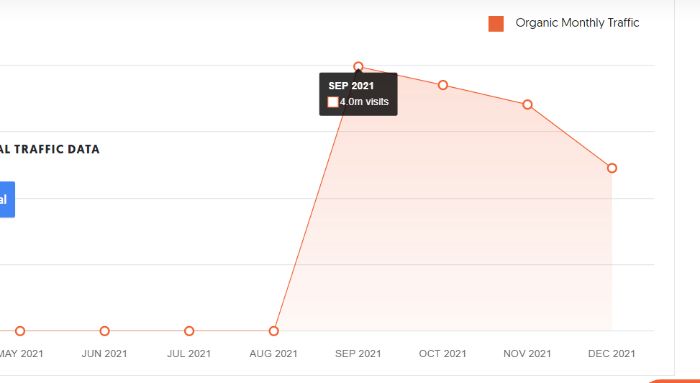
When a brand is consistently represented across all of their platforms, revenue can increase by up to 23 percent. Branding also makes it easier to present your values and increase customer loyalty. 89 percent of customers are willing to stay loyal to brands who share their values.
With the establishment and growth of your brand, you will start receiving more traffic from non-branded terms as well as branded terms. That’s why I see millions of organic views each month!
Tips for building your brand:
- Figure out what social platforms your target audience uses and tailor your strategy accordingly! 82 percent of Americans use social media, so you need to be comfortable using it to promote your brand.
- Think about forming a partnership with a complementary brand. For example, Lego and IKEA formed a partnership that benefitted them both. Approach companies whose products or services complement your brand and see if you can work together.
- As you plan your brand awareness campaign, make sure to highlight your brand’s personality, story, and values. Talk about more than just what you sell. This will resonate with your target audience more!
3. Create Thought-Leadership and Strategic Content
Once you have solid, pillar content (i.e., content that targets relevant keywords) on your website, it’s time to think more strategically. You want to be more than just an information site, but an authoritative one. You can do so with thought-leadership and strategic content.
In fact, 54 percent of decision-makers say they spend more than one hour per week reading thought leadership content relevant to their business. At the same time, 71 percent say that less than half of what they read gives them valuable insights
This means there is still a massive opportunity with this content. It requires you to look ahead and answer questions that aren’t even being asked yet. You want to speak directly with industry leaders and subject matter experts by getting ahead of the current state of things.
While this type of content takes more time and effort to create, it’s well worth it. When you create content that other brands look to, it builds your brand and increases your backlink portfolio.
Tips to create thought-leadership and more strategic content:
- Look for trends on where your industry will be going in the next 5-10 years and make content that speaks to them.
- Think about frequently asked questions in your industry that can be addressed with data. Identify topics where you have the capability and resources to provide relevant data points.
- Do some internal or external research and create content that highlights your findings. This will help establish you as an industry leader which can lead to more backlink opportunities from other sites citing your content.
- Set Google alerts to stay up-to-date on news and events that affect your industry. Be one of the first to write and present your views on the topic, backed by valuable insights.
4. Diversify Your Backlink Profile
What does it mean to diversify your backlink profile? In short, you want as many links as possible from as many websites as possible.
An Ahfrefs study that looked at more than 1 billion web pages found that 66.31 percent of them had zero referring domains and 26.29 percent of them only had one to three referring domains. Less than 0.1 percent of sites had more than 100 referring domains which is pretty eye-opening when you stop to think about it.
When getting backlinks, you want to make sure the type of anchor text copy used varies. Some examples on different variations to look out for include:
- branded anchor text: “According to Neil Patel…”
- long-tail anchor text: “…we should consider the future of SEO”
- naked link anchor: “https://neilpatel.com/blog/the-future-of-seo/”
My backlink checker is an excellent way to get this information as I outlined in a previous section.
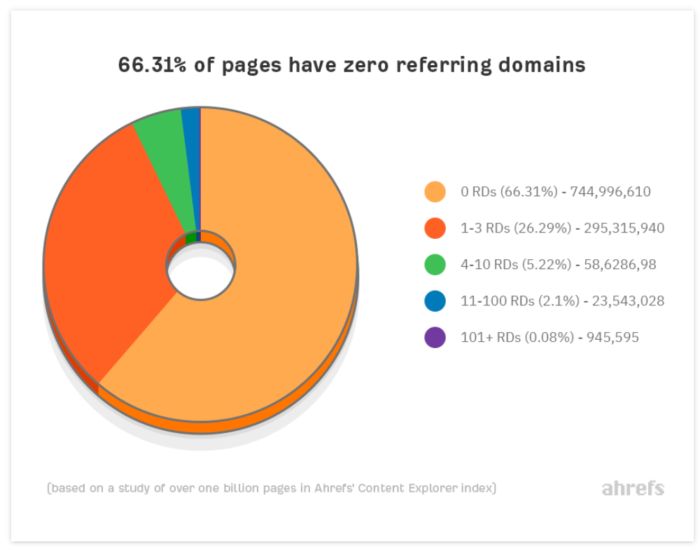
Tips to diversify your backlink profile
- Try to get links from directories and other resource roundups as a way to diversify links.
- Reach out to websites that would be a natural fit to your brand. Ask them to link to you and vice versa.
- Run a backlink report on your competition and check where they get links from. Target those websites or similar ones to link back to you.
5. Use Subject Matter Experts to Increase Your EAT Score
EAT stands for expertise, authority, and trust.
An EAT score is one of the most important factors when determining page quality. While you don’t have to be an expert or authority on each topic you write about, you should be emulating those individuals to create content that gets a higher score.
47 percent of buyers will generally read three to five pieces of content before engaging with a sales representative. Connecting with subject matter experts or emulating their content increases the chances of a buyer engaging with your content before moving to the next stage.
Whether you’re creating thought-leadership content yet or not, you can still look to subject matter experts for help. While interviews with such people are best, they’re not the only way to “borrow” their authority.
You can also link to interviews done by other content creators, insert quotes from subject matter experts in your posts, or highlight other content forms the subject matter has done such as videos, podcasts, or infographics.
Tips on using subject matter experts to improve your EAT score:
- Find subject matter experts through professional directories such as trade publications, searching on LinkedIn, and joining related Facebook groups.
- Make sure your subject matter expert you focus on is the right fit for your targeting audience.
- If your chosen subject matter expert doesn’t have a lot of time, be flexible with how you work with them. This could be by simply asking them to review your content for accuracy and then crediting them on the page.
Bad SEO Practices to Avoid in 2022
Now that we’ve gone through the most important ways you can dominate Google with better SEO strategies in 2022, let’s focus on some things you should avoid.
Not much has changed here, but all of these are still practices that can have a negative impact on your SERP rankings.
1. Keyword Stuffing
Keyword stuffing is the act of stuffing as many keywords, both direct and related, into a piece of content as possible. The idea is that the more keywords an article has, the more relevant the content will appear and the higher it’ll rank on SERPs. The exact opposite is true, though.
When a keyword appears too often on a page, the page will be flagged as spammy by Google’s crawl bots. This will negatively affect rankings.
The easiest way to avoid this is to keep keyword density to 2 percent. This goes for the main keyword but also related keywords on the topic.
2. Keyword Cannibalization
Keyword cannibalization occurs when two or more pages on your site are targeting the same main keyword. This is common on newer websites where the owner may think it’s better to split up larger pieces of content in order to create more pages.
For example, if the target keyword is “meringue” and they create one post on “How to Make the Perfect Meringue” and another post on “X Common Mistakes When Making Meringue.” To avoid cannibalization, a larger post should be created that includes both of those post titles as H2s. This is known as pillar content.
3. Duplicate Content
Somewhat related to keyword cannibalization is duplicate content.
Duplicate content is substantive blocks of content that match or are similar to other content elsewhere on the site or across the internet. The latter is also termed plagiarism.
To prevent Google from flagging content on your website as duplicate, use the following tips:
- Create 301 redirects.
- Keep a consistent URL structure.
- Use top-level domains.
- Use the noindex tag on syndicated content.
4. Exact Match Anchor Text
Similar to keyword stuffing, you don’t want exact match anchor text phrases to show up too often in your content. Why? It’s a clear signal to search engines that you’re trying to manipulate rankings.
To avoid this practice, you’ll first need to determine the current status (i.e. partial versus exact) of any and all links back to your site. You can do so with the Ahrefs’ Site Explorer:
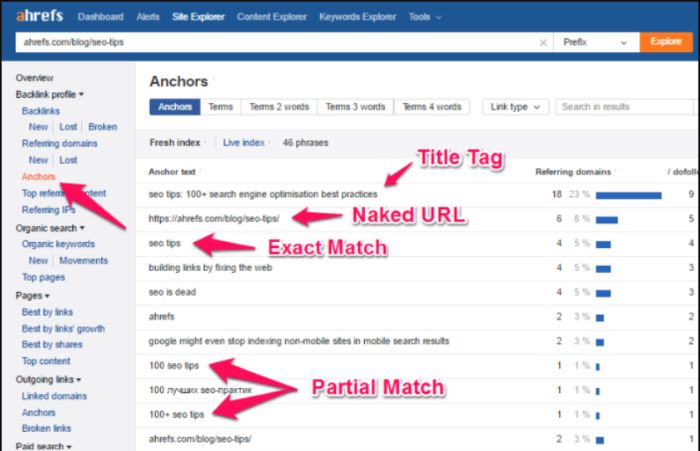
The goal is for only 10-20 percent of all referring domains to link exactly or partially.
If you’re not actively link-building, then it’s unlikely you’re in danger of this particular misstep. However, it’s good to keep a pulse on your backlink portfolio at all times.
5. Spammy Link Building
While we already covered this to some degree, it is still worth repeating. There is a right way to go about getting backlinks and a wrong way.
There are some obvious offenders, like link directories, blog comments, paid links, and link schemes. You should also reevaluate the relationship you have with any referring domains. Do they have good linking practices? Do they use only white hat SEO tactics? The answers to these two questions will go a long way in informing you of whether the continued relationship will be beneficial or detrimental to your backlink profile.
Frequently Asked Questions About SEO With Google
Is SEO free on Google?
Search listings are free on Google. Search rankings are based on Google’s algorithm and no one can pay for a better ranking.
How long does it take to optimize my website for Google?
Assuming you are using the most common practices as outlined above in the article, it can take some time to implement all optimizations on your website. How long will depend on the size of your site and manpower. As for how long it takes to start seeing organic results, the consensus is four to six months.
How can I dominate the SERPs in 2022 through SEO?
The key to any successful SEO strategy is to focus on white hat techniques that have been proven to work. These are all outlined above.
Are there major Google algorithm updates expected in 2022?
Google releases thousands of algorithm updates every year. As for major updates, one to look out for at the beginning of 2022 is the intention to add page ranking signals to desktop search. This is expected to be completed by March 2022.
Conclusion: Dominating SEO With Google
As much as things change when it comes to Google’s algorithm and SEO, one thing remains constant: relevant, high-quality content is always a solid place to start.
By implementing the 12 on-page and technical SEO practices above, though, you can be sure to dominate SEO with Google in 2022. Why? Because these techniques help you to improve your content for both users and crawl bots to ensure a clean, engaging experience.
Which of the techniques above will you implement on your website first?
from Blog – Neil Patel https://ift.tt/JYyVRP4Ox

No comments:
Post a Comment